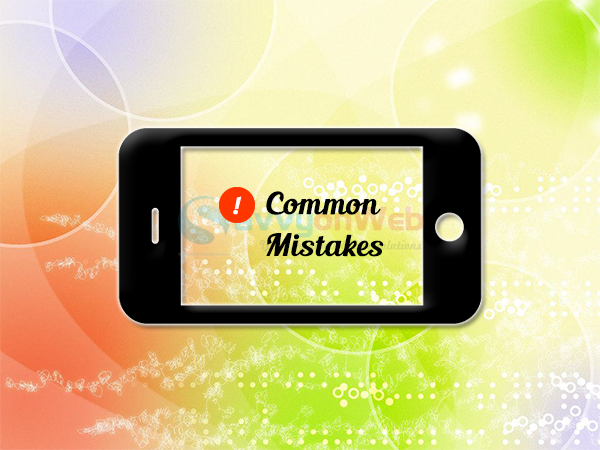Common Mistakes that App Developers should avoid

Each and every other week, news of another application soaring up the prominence diagrams increases current standards on client experience. Those clients are encountering better and better methods for doing likewise things they've been doing, and they're finding new techniques for those undertakings which have a nearly unimportant expectation to absorb information.
Does your application fit into this class? Application engineers like to concentrate on the big view with regards to ease of use or client experience. In any case, there are still seemingly insignificant details that are very annoying if not done right.
The accompanying activities are those that a great deal of application engineers have a tendency to disregard, at their danger. However, done right, they will offer you some assistance with avoiding botches and guarantee that your clients finish their assignments and utilize your application easily.
1. Adjust the Keyboard to significant content data
The keyboard on the telephone is constrained. You can't generally pack in every one of the keys of a portable workstation or a desktop PC on the unmistakable screen. The client regularly needs to tap on the movement or number keys to enact numbers and uncommon characters.
Anyway, why not make it simple for them to data content while rounding out structures on your application, by actuating the pertinent part in the console in light of the info field? For instance, numerous applications commit the error of not putting the "@" image in the console format where the client is provoked to information his or her email address.
Thus, when the client is incited to enter a telephone number or some other number, naturally summon the numeric console in that data field.
2. Ensure simplicity of last-screen access
Apple, prominently, perceives this as an ease of use variable that helps clients rapidly return to the last application got to. In the most recent OS forms, on the off chance that you get to another application from inside of the current one (for instance Safari from your mail application), you'll see that the highest point of the screen has a connection you can tap to rapidly come back to the mail application once you're finished with the Safari application.
Additionally, when individuals experience a few screens in your application, they have a tendency to overlook what they got to last, not to mention what they got to two taps back. By monitoring your clients' last route, you can rapidly take them back to whatever they last recall (or don't) doing in the application.
3. Keep up pace of access
Individuals need things immediately now - haven't you seen the expansion of on-interest new companies? Try not to make clients hold up when utilizing your application as they travel between different screens or bring information from the server.
Rather, make utilization of information reserving to guarantee load times. One of the greatest mix-ups I see numerous applications make when they're depending on information originating from the server is that every time a client gets to his or her application, the information is brought new.
This is an issue on the grounds that if the client isn't associated with information or wi-fi, or if the association velocity is moderate, and the client needs to rapidly get to the application, this won't be conceivable. In the event that the last got to information is stored in the application, it won't hurl a clear screen for the client.
4. Arrangement on availability for bigger screens
Screen sizes are just getting greater. Indeed, even safe Apple has beginning giving route, beginning with iPhone 6. Our hands and fingers, then again, aren't discovering up to this developing pattern.
That requires a convenience challenge, considering that most clients who access applications with one hand think that it’s hard to achieve the top parts of an application. That issue will just decline once the route catches are set in that area.
Obviously, Apple has an answer for that issue through its reachability setting, which permits the client to twofold tap (not press) the home catch to cut the whole screen down. What's more, that gives clients a chance to access the application's top route; yet why might you need to depend on the gadget producer to accommodate an incredible client experience for your application?
In this way, stay aware of the times Design your application remembering a greater screen, alongside the openness variable for your route and top-level intelligent substance.


